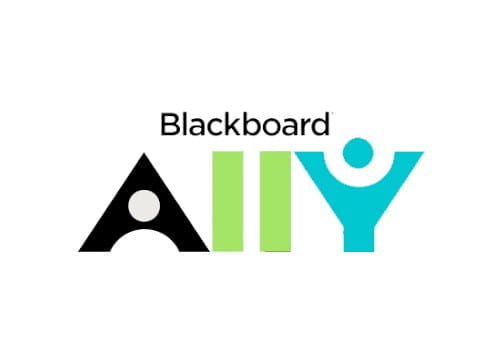I have been very excited by the flurry of activity that has been triggered by The Public Sector Bodies (Websites and Mobile Applications) Accessibility Regulations (2018) across my own and other institutions. These regulations haven’t really introduced anything new, much of it is covered by existing equalities legislation, but it has shifted the focus. Previously, we could be reactive and in our laziest moments rely on those that needed adjustments to request them. Now, we are required to be proactive. To create content that is accessible by design and follows Universal Design for Learning principles around designing for POUR (i.e., so content is Perceivable, Operable, Understandable and Robust). Aligning with the social model of disability: people are disabled by barriers in society, not by their impairment or difference.
 Many colleagues I meet are concerned about what the regulation means in terms of workload, what is required of them and how they become compliant. A range of guidance and support is being delivered to help raise awareness and develop the required skills. But, fundamentally there needs to be a mind shift.
Many colleagues I meet are concerned about what the regulation means in terms of workload, what is required of them and how they become compliant. A range of guidance and support is being delivered to help raise awareness and develop the required skills. But, fundamentally there needs to be a mind shift.
Although there are deadlines associated with the regulations, I would argue that digital accessibility is not a compliance challenge but a cultural shift. A move from directive or requirement to part of our institutional DNA.
In a workshop I co-hosted with my colleague Leo Havemann, a participant described Digital Accessibility as being akin to Escher’s staircase, and I believe that they are correct. We will never not need to consider accessibility as part of our learning and content designs, and it may at times be impossible to be 100% accessible to everyone. However, it doesn’t mean that this shouldn’t become part of our day-to-day practice. The recently launched Student Health and Wellbeing Strategy echoes this with Action 1D: Make key concepts related to disability awareness, inclusive learning, health and wellbeing an integral part of relevant professional services staff and Personal Tutor training. Incorporate these concepts into curriculum development, design and governance.
So, how do we make accessibility part of our everyday? The aim of the aforementioned workshop was to crowd-source ideas on how to create the cultural shift, but also to identify what we can do now to help affect our institutional cultures.
 For creating a cultural shift, key themes were to obtain buy-in from senior leadership teams and to embed digital accessibility in induction, training and promotion/development requirements. Making it part of the institutional language and ways of working for all. There was an acknowledgement that we needed to be honest with colleagues that it would require additional effort and different ways of thinking and doing. However, this would reduce over time as a result of skills development, cultural shift and tools to help. There should also be a bottom-up approach facilitated by peer evaluation and creating a network of champions within and across institutions.
For creating a cultural shift, key themes were to obtain buy-in from senior leadership teams and to embed digital accessibility in induction, training and promotion/development requirements. Making it part of the institutional language and ways of working for all. There was an acknowledgement that we needed to be honest with colleagues that it would require additional effort and different ways of thinking and doing. However, this would reduce over time as a result of skills development, cultural shift and tools to help. There should also be a bottom-up approach facilitated by peer evaluation and creating a network of champions within and across institutions.
With regard to what we can do now, 15% solution, a key theme was walking the talk – demonstrating good practice through our own behaviours and leading the way for others to follow. Training and support were also key themes, as were demonstrating good practice and cultivating empathy.
There may well be dragons to face along the way, but they are worth facing for the creation of a more inclusive and equitable institution.
If you would like to run the workshop at your institution, the materials are available under CC BY-SA 4.0 license: DirectiveToDNA-AccessibilityWorkshop
The materials are also available via OpenEd@UCL.
 Close
Close





